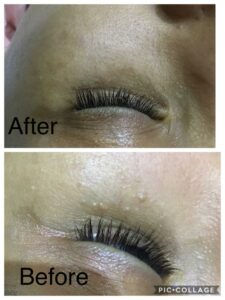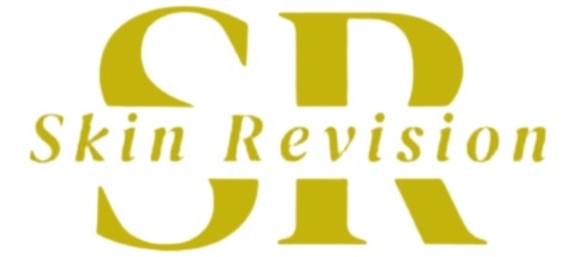Milia
Milia, those tiny white bumps that often appear on the skin. Although white and small, Milia can be a cosmetic concern for adults, children and parents of babies.
The common skin issue is successfully treated here at Skin Revision in Beaconsfield, with VeinAway. This safe, quick and successful heat cauterisation process is now the UK’s leading Milia removal technology.
In this article, we’ll delve into the causes, demographics affected, common locations, preventive measures and the most commonly asked questions related to Milia
Causes of Milia:
Milia are small, pearly-white cysts filled with keratin, a protein found in the skin, hair, and nails. The primary cause of Milia is dead skin cells getting trapped beneath the surface of the skin, leading to the formation of these tiny white bumps. However, other contributing factors may include:
- Skin Care Products: The use of heavy, occlusive skincare products can trap dead skin cells and contribute to Milia formation.
- Sun Damage: Prolonged exposure to the sun’s harmful UVA and UVB rays can thicken the skin, making it more prone to Milia.
- Skin Trauma: Injuries to the skin, such as burns or abrasions, can trigger the formation of Milia.
Demographics and common locations:
Milia can affect individuals of all ages, from babies to adults. They are commonly observed on the face, especially around the eyes and cheeks. However, it is not uncommon for Milia to appear on other parts of the body.

Skin tone and Milia:
Milia can occur on any skin type or colour. They are not exclusive to a particular complexion, making VeinAway a generic and very best solution for individuals with diverse skin tones.
Preventive Measures:
While Milia may not always be preventable, adopting certain skincare practices can help minimise the risk of their occurrence:
- Gentle exfoliation: Regular exfoliation helps remove dead skin cells, reducing the likelihood of Milia formation.
- Use of non-comedogenic products: Use skincare products labelled as non-comedogenic to prevent pore blockage.
- Sun protection: Wearing sunscreen with a high SPF, such as SPF 30, can prevent sun damage and reduce the risk of Milia.
It is recommended that you do seek professional advice to achieve the safest and best results to remove Milia for good. However, here a few home remedies that can be considered.
Examples of home remedies for Milia include:
- Daily cleaning of the affected area. Use a mild fragrant-free soap to prevent skin irritation.
- Steam the pores. This can be done by sitting in the bathroom close to a hot shower.
- Exfoliate the area regularly. However do not over-exfoliate and use only a recommended cream or serum.
- Use sunscreen. High-protection sunscreens, such as SPF 50.
- Topical retinoids. Topical creams can be important such as Vitamin A. However, whilst Vitamin A may work for mild acne, it is not entirely proven to be effective on Milia.
Do not pick at your Milia as this can increase the risk of infection and can lead to scarring.
Types of Milia:
- Primary Milia: Common in both infants and adults, primary milia occur without an apparent cause.
- Milia en Plaque: This type forms as a group of milia over a raised, inflamed lesion.
- Multiple Eruptive Milia: These are characterised by clusters of milia that erupt suddenly on various parts of the body.
- Traumatic Milia: Resulting from injury or trauma to the skin, such as burns or abrasions.
- Milia Associated with Medication: Certain medications, including steroid creams, can lead to the development of milia.
Here are some of the most frequently asked questions on Milia.
-
What causes Milia to form on the skin?
- Milia form when dead skin cells become trapped beneath the surface, leading to the formation of small cysts filled with keratin. Contributing factors include the use of heavy skincare products, sun damage, and skin trauma.
-
Who is more prone to developing Milia?
- Milia can affect individuals of all ages, from babies, young children and adults. It is commonly observed on the face, especially around the eyes and cheeks, but can appear on other parts of the body as well.
-
Can Milia be prevented, and what preventive measures can be taken?
- While Milia may not always be preventable, certain skincare practices can help minimize the risk. These include gentle exfoliation to remove dead skin cells, the use of non-comedogenic products, and regular application of sunscreen to prevent sun damage.
-
Are there different types of Milia, and if so, how are they classified?
- Yes, there are different types of Milia. They include Primary Milia (without an apparent cause), Milia en Plaque (grouped over a raised, inflamed lesion), Multiple Eruptive Milia (clusters erupting suddenly on various body parts), Traumatic Milia (resulting from skin trauma), and Milia Associated with Medication (linked to certain medications, such as steroid creams).
-
How can Milia be treated?
- At Skin Revision we would ask if home remedies had been successful in treating the Milia. However, for the safest and longer term results, a skin treatment for Milia, with VeinAway at Skin Revision, would be the best option.
-
Does the VeinAway treatment hurt?
- VeinAway treatment for Milia is generally well-tolerated and considered to be minimally uncomfortable. There may be a mild sensation of heat and tingling during the procedure, but any discomfort is usually brief.
-
Does the Milia disappear immediately after VeinAway treatment?
- Some individuals may notice improvement immediately after VeinAway treatment. However, most people have to wait a few days for the Milia to disappear.
8 How long before the Milia is not seen after VeinAway treatment?
- The timeline for Milia disappearance can vary among individuals. The skin’s natural healing process plays a role, and gradual improvement can be expected over the following days. For the skin to be smooth with no sign of the blemish or treatment, it may take a few days to a week.
-
9 Will the Milia return in the same place after VeinAway treatment?
- VeinAway treatment aims to address existing Milia effectively. While the treated Milia should not return in the same location, it’s essential to maintain good skincare practices to prevent the formation of new Milia
-
10 Are there any side effects, and is there downtime after VeinAway treatment?
- VeinAway treatment is generally safe with minimal side effects. Some individuals may experience mild redness or swelling in the treated area, but these effects are temporary and typically subside within a short time. There is little to no downtime associated with VeinAway, allowing resumption of daily activities immediately after the procedure. It’s advisable to follow any post-treatment care instructions provided by the skin experts at Skin Revision to optimise the results and minimise potential side effects.
Milia can be cosmetically annoying but is harmless and easily treatable at the Skin Clinic.
The cosmetic procedure for the removal of Milia is only performed privately and cannot generally be performed with your local doctor or GP.
If you are live in Buckinghamshire or Berkshire and are looking for a skin clinic near me for Milia removal treatment, do give Skin Revision a call. Visit the website at www.SkinRevision.uk and speak to Jacqui Bannister.
Sources and Papers
https://web.as.uky.edu/biology/faculty/cooper/bctc/milia%20paper.pdf

